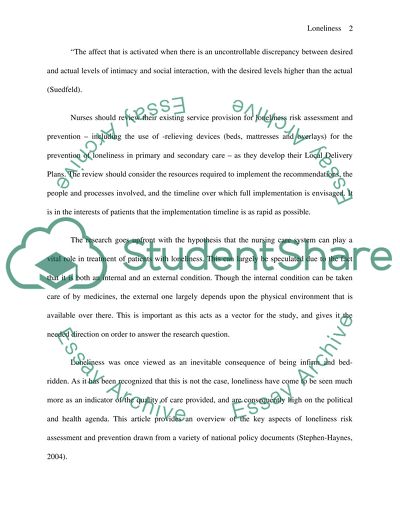Cite this document
(“Loneliness Essay Example | Topics and Well Written Essays - 3500 words”, n.d.)
Loneliness Essay Example | Topics and Well Written Essays - 3500 words. Retrieved from https://studentshare.org/psychology/1534541-loneliness
Loneliness Essay Example | Topics and Well Written Essays - 3500 words. Retrieved from https://studentshare.org/psychology/1534541-loneliness
(Loneliness Essay Example | Topics and Well Written Essays - 3500 Words)
Loneliness Essay Example | Topics and Well Written Essays - 3500 Words. https://studentshare.org/psychology/1534541-loneliness.
Loneliness Essay Example | Topics and Well Written Essays - 3500 Words. https://studentshare.org/psychology/1534541-loneliness.
“Loneliness Essay Example | Topics and Well Written Essays - 3500 Words”, n.d. https://studentshare.org/psychology/1534541-loneliness.


